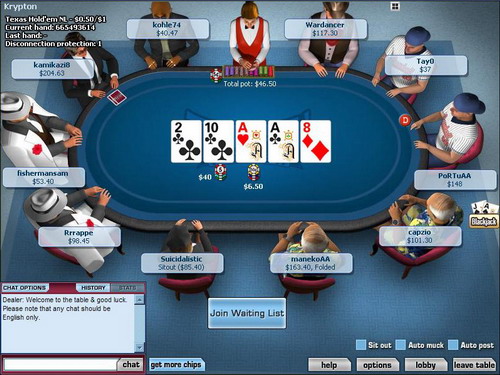The calculation of the odds is not complicated
Some players often advise you to act on your side when you have to make the decision to follow or move. What is the right decision? How do you decide? And how to act accordingly?
What is the calculation method?

Mathematics plays an important role in Texas Hold'em poker. Actually, it is more about arithmetic rather than about mathematics in general.
The concept of curve is purely financial. It helps to you make the most profitable decisions in the long term at any time but there is no guarantee that the decision you make will have the expected result. However, it may be a good decision or a bad one.
The curve gives you the percentage of chances of hitting a winning hand after the flop and the turn.
Here is an explanation of how to calculate the poker odds. This calculation method is simplified, but the error margin is only 1%, so you can pretty much determine whether you will get a certain outcome or not.
Calculating the poker odds
There is a simple, fast and efficient way to determine the chances that your hand is better than your opponent’s. Odds are required for all poker tournaments strategies. This percentage is determined by calculating the number of cards that will improve your hand in advance.
The calculation of the "outs"
The "outs" (which can be translated as "outcomes") are the cards that can determine a win (at least it is assumed that you will definitely win if you focus on your opponent's gameplay). Also, if you find that your opponent has A-K and you have 7-8 on a flop of A-8-2, then you must get a 7 or an 8 on the turn and/or river.
So there are three 7s and two 8s in the deck of cards, which means that there are 5 cards that can save you, so exactly 5 cards in the deck that can get you to win over your opponent. Therefore, you have five outs to earn this shot on the turn or the river. You see that you can determine the "outs" by taking into account all the cards that can improve your hand enough to save you from your opponent (or opponents).
The calculation of the odds through the "outs"
You can only determine the curve once you know the exact number of your "outs". Once you know this curve, it is really easy to know the chances of winning the game.
Thus simply stick to the small calculations:
How to calculate the flop curve when the turn and river are to come: Multiply your "outs" by 4 and add 2 to that result. You also need to konw the power hand rankings. If you take the example with 5 "outs", you have 5 x 4 + 2 = 22% chance of improving your hand and beating your opponent.
How to calculate the flop curve when only the river is to come: Multiply your "outs" by 2 and add 2 to that result. If you take the example with 5 "outs" on the river, you have 5 X 2 + 2 = 12% chances of improving your hand and beating your opponent.
So, you can determine the likelihood that you beat your opponent's hand. It will save you from paying too much or overestimating your hand.
No comments:
Post a Comment